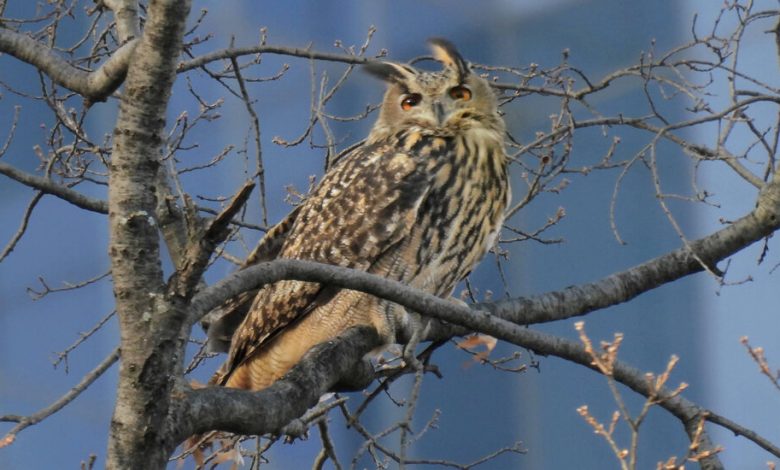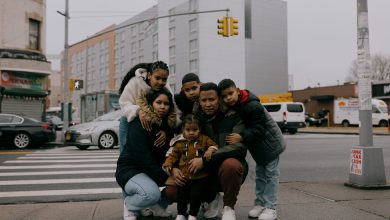An Owl Named Flaco Is Loose in Central Park, With Vandals to Blame

A Eurasian eagle-owl named Flaco was the subject of an intense rescue effort late Friday after getting loose as a result of vandals having damaged his Central Park Zoo enclosure the night before, parks and zoo officials said.
As darkness loomed and temperatures plunged, a small crowd of bird watchers equipped with binoculars, professional-grade cameras and tripods stood clustered on a path in the park’s southeast corner. They tried to get a look at the orange-and-black-striped bird of prey while zoo workers and park rangers moved through the trees toward his perch on a tall branch.
“Patience is the key thing,” a zoo employee said.
The rescue drama played out nearly 24 hours after zoo workers discovered that Flaco was missing and that the stainless steel mesh around his enclosure had been cut, zoo officials said. At that point, the zoo said in a statement, “a team was mobilized to search for the bird.”
Passers-by and police officers spotted the owl on Fifth Avenue, but he soon flew off. He was later seen in a tree near 59th Street, where he spent the night as zoo workers kept an eye on him from the ground below.
By sunrise, the zoo said, Flaco had flown back into Central Park, where workers maintained “visual contact” with him throughout Friday. As dusk came, he remained out of reach. The nearby Hallett Nature Sanctuary was closed off to the public. It was not immediately clear how his flight to freedom would end.
More on Birds
- An Epic Flight: In search of an endless summer, bar-tailed godwits fly 7,000 miles each year — from Alaska to New Zealand. And they do it without stopping to eat, drink or rest.
- An Uneven Crisis: The risk of extinction, a study suggests, is not randomly or equally spread across the avian family. Instead, the most distinctive birds are likely to vanish first.
- Hammering Away: A study shows that woodpeckers do not absorb shocks during pecking and they likely aren’t being concussed either.
- A Beloved Bird Call: The corncrake’s loud cry was once a common sound of summer in Ireland, but these days it can seldom be heard. Efforts are underway to bring it back.
Flaco arrived at the zoo in 2010, moving into its Temperate Territory section, where the other occupants included snow leopards, snow monkeys and red pandas.
Eagle-owls are among the largest of the species and have a wingspan of up to 79 inches, according to zoo information. Nocturnal birds with distinctive orange eyes, they are found in much of Europe and Asia and parts of northern Africa, where, according to the Peregrine Fund, a conservation group, they live in a variety of wooded habitats. Common in areas with rocky outcrops and cliffs, they also live in open habitats that have some trees.
In the wild, the Eurasian eagle-owl, or bubo bubo, does its hunting at twilight, targeting rodents, rabbits and large game birds, according to the Encyclopaedia Britannica. The owls have also been known to live in city parks and one once showed up at the Helsinki Olympic Stadium in Finland, according to the Peregrine Fund.
Molly Eustis, 42, a stage manager who lives in Queens, was among those who braved the cold on Friday afternoon to see the search for herself. She said she had developed a love of owls during the days of Barry the Barred Owl, a wild bird who appeared in Central Park during the pandemic. Barry attracted many admirers before she was killed in a collision with a Central Park Conservancy maintenance vehicle in 2021.
“I wanted to see him and take a picture,” Ms. Eustis said of Flaco. “You don’t get to see them in the wild very much.”
But she worried about his ability to survive on his own after all his years in the zoo, and as temperatures dropped toward the single digits with strong winds.
“An owl that is raised in captivity is not going to know how to hunt, is not really going to know how to navigate the world in the same way as a wild animal,” she said.
An investigation into who vandalized Flaco’s enclosure was continuing, zoo officials said.




